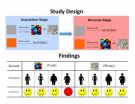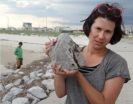(Press-News.org) Rapidly accumulating data on the molecular sequences of animal genes are overturning some standard zoological narratives about how major animal groups evolved. The turmoil means that biologists should adopt guidelines to ensure that their evolutionary scenarios remain consistent with new information—which a surprising number of scenarios are not, according to a critical overview article to be published in the August issue of BioScience and now available with Advance Access.
The article, by Ronald A Jenner of the Natural History Museum in London, describes how evolutionary trees inferred from genomic information have overtaken and even displaced traditional studies of animal forms. The traditional studies sought explanations for how the body plans of the three dozen or so major animal groups most likely evolved, but molecular data provide strong evidence about genealogical relationships without yielding explanations. So even though data are accumulating as researchers study more and more animal genes, there remain severe limits on researchers' ability to construct satisfying accounts of how diverse animal forms evolved.
The difficulty arises because the major evolutionary changes that established the principal animal groups occurred in the remote past, and there are too few surviving intermediate forms to infer evolution's steps in detail. This has sometimes led zoologists to give imagination too free a rein when they devise their hypotheses, Jenner argues. In other cases, new data have forced biologists to accept accounts they had previously found unimaginable. Imagination will remain important in evolutionary studies, Jenner stresses, but biologists will best advance science if they ensure their proposals are consistent with evolutionary trees that are well supported by molecular data, if they look for incompatible evidence and obvious difficulties, and if they evaluate alternative scenarios, as well as their preferred ones. They should also examine the basis of their intuitions and build their ideas of the broadest possible base of evidence, including, for example, that from newly discovered fossils and from new anatomical information. New fields of inquiry offer hope that progress will be made, but "we desperately need" well-funded organismal biologists to achieve it, according to Jenner, not just bioinformaticians and molecular evolutionists.
INFORMATION:
BioScience, published monthly by Oxford Journals, is the journal of the American Institute of Biological Sciences (AIBS). BioScience is a forum for integrating the life sciences that publishes commentary and peer-reviewed articles. The journal has been published since 1964. AIBS is a meta-level organization for professional scientific societies and organizations that are involved with biology. It represents nearly 160 member societies and organizations. Follow BioScience on Twitter @BioScienceAIBS.
Oxford Journals is a division of Oxford University Press. Oxford Journals publishes well over 300 academic and research journals covering a broad range of subject areas, two-thirds of which are published in collaboration with learned societies and other international organizations. The division been publishing journals for more than a century, and as part of the world's oldest and largest university press, has more than 500 years of publishing expertise behind it. Follow Oxford Journals on Twitter @OxfordJournals.
Organismal biologists needed to interpret new trees of life
As molecular data revise the facts of animal body-plan evolution, new efforts are needed to integrate scientific perspectives
2014-07-16
ELSE PRESS RELEASES FROM THIS DATE:
When it comes to food, obese women's learning is impaired
2014-07-16
Obese women were better able to identify cues that predict monetary rewards than those that predict food rewards, according to a study by Yale School of Medicine researchers and their colleagues in the journal Current Biology. The findings could result in specific behavioral interventions to treat obesity.
"Instead of focusing on reactions to the food itself, such interventions could focus on modifying the way in which obese individuals learn about the environment and about cues predicting food rewards," said lead author Ifat Levy, assistant professor of comparative medicine ...
Oregon study details brain pathways linking visual function, running
2014-07-16
EUGENE, Ore. – (July 16, 2014) – A new study by researchers at the University of Oregon published today in the journal Neuron describes a brainstem circuit in mice that may help explain how active movement impacts the way the brain processes sensory information.
"Previous studies have examined changes in the visual cortex of mice during running. What was unknown was how do running and vision get linked together in the first place?" said Cristopher Niell, a biology professor in the Institute of Neuroscience and the senior author on the paper "Identification of a Brainstem ...
Efficient structures help build a sustainable future
2014-07-16
CORAL GABLES, Fla. (July 14, 2014) -- When envisioning a new structure, engineers often have to balance design choices against the environmental impact of materials used. It is estimated that 40 to 50 percent of greenhouse gases are produced by the construction industry, according to the California Integrated Waste Management Board. Lessening the impact of construction on the environment is a work in progress.
Researchers at the University of Miami (UM) and the University of Milwaukee School of Engineering are searching for designs and materials that are less harmful ...
A natural way to monitor, and possibly control populations of, stink bugs
2014-07-16
Anyone who has squashed a stink bug knows why they got their name. Although just a nuisance to homeowners, the insects feed on and damage fruits and vegetables, causing significant economic losses for farmers. Now scientists report in ACS' Journal of Natural Products that they've discovered certain stink bug pheromone components and made them artificially in the lab for the first time, and these substances can be used to monitor and manage their populations.
Ashot Khrimian and colleagues explain that the brown marmorated stink bug, also known as Halyomorpha halys, is ...
Abdominal aortic aneurysms: Mayo Clinic surgeon explains who needs screening, treatment
2014-07-16
Rochester, Minn. — An abdominal aortic aneurysm is a potentially life-threatening condition: If the body's major blood vessel ruptures, it can prove deadly. The U.S. Preventive Services Task Force recently updated its recommendations on screening. Mayo Clinic vascular surgeon Peter Gloviczki, M.D., explains who should be watched for abdominal aortic aneurysms, how they are diagnosed and how surgery, which now includes a less invasive endovascular option, is improving survival rates:
MULTIMEDIA ALERT: Video and audio are available for download on the Mayo Clinic News Network.
What ...
ORNL, UTGSM study compares structures of Huntington's disease protein
2014-07-16
OAK RIDGE, Tenn., July 16, 2014 -- Neutron scattering research at the Department of Energy's Oak Ridge National Laboratory has revealed clear structural differences in the normal and pathological forms of a protein involved in Huntington's disease.
Huntington's disease, an incurable neurodegenerative disorder, starts as a genetic mutation that leads to an overabundance of "huntingtin" protein fragments, which form clumps in the brain.
Valerie Berthelier of the University of Tennessee Graduate School of Medicine, who co-led the study published in Biophysical Journal ...
Expert guidance on hand hygiene in healthcare settings
2014-07-16
CHICAGO (July 16, 2014) – Expert guidance released today offers updated evidence reviews and recommendations for hand hygiene in healthcare facilities. The guidance is featured in the August issue of Infection Control and Hospital Epidemiology and emphasizes best practices for implementing and optimizing hand hygiene programs to prevent the spread of healthcare-associated infections (HAIs). The guidance is part of the Compendium of Strategies to Prevent Healthcare-Associated Infections in Acute Care Hospitals: 2014 Updates produced in a collaborative effort led by the Society ...
Drug's effect on Alzheimer's may depend on severity of disease
2014-07-16
A cancer drug that has shown promise against Alzheimer's disease in mice and has begun early clinical trials has yielded perplexing results in a novel mouse model of AD that mimics the genetics and pathology of the human disease more closely than any other animal model.
The drug, bexarotene, was found to reduce levels of the neurotoxic protein amyloid-beta in experimental mice with late-stage Alzheimer's but to increase levels during early stages of disease.
The finding, by researchers at the University of Illinois at Chicago College of Medicine, was reported July 16 ...
Research connects pregnancy loss and cardiovascular disease
2014-07-16
The Annals of Family Medicine today published an article detailing research showing that women with a history of pregnancy loss are at higher risk for cardiovascular disease later in adulthood than other women, work completed by physicians in the Center for Primary Care and Prevention (CPCP) at Memorial Hospital of Rhode Island.
The article "Risk of Cardiovascular Disease Among Postmenopausal Women with Prior Pregnancy Loss: The Women's Health Initiative" stems from the analysis of data from the maternity experiences of a sample of 77,701 women, according to Donna Parker, ...
Dispersant from Deepwater Horizon spill found to persist in the environment
2014-07-16
The 2010 Deepwater Horizon (DWH) spill in the Gulf of Mexico was the largest accidental release of oil into the ocean, with approximately 210 million gallons gushing from the blown out well. In an attempt to prevent vast quantities of oil from fouling beaches and marshes, BP applied 1.84 million gallons of chemical dispersant to oil to oil released in the subsurface and to oil slicks at the sea surface. The dispersant was thought to rapidly degrade in the environment.
A new study by scientists at Haverford College and Woods Hole Oceanographic Institution (WHOI) has found ...
LAST 30 PRESS RELEASES:
Safety decision-making for autonomous vehicles integrating passenger physiological states by fNIRS
Fires could emit more air pollution than previously estimated
A new way to map how cells choose their fate
Numbers in our sights affect how we perceive space
SIMJ announces global collaborative book project in commemoration of its 75th anniversary
Air pollution exposure and birth weight
Obstructive sleep apnea risk and mental health conditions among older adults
How talking slows eye movements behind the wheel
The Ceramic Society of Japan’s Oxoate Ceramics Research Association launches new international book project
Heart-brain connection: international study reveals the role of the vagus nerve in keeping the heart young
Researchers identify Rb1 as a predictive biomarker for a new therapeutic strategy in some breast cancers
Survey reveals ethical gaps slowing AI adoption in pediatric surgery
Stimulant ADHD medications work differently than thought
AI overestimates how smart people are, according to HSE economists
HSE researchers create genome-wide map of quadruplexes
Scientists boost cell "powerhouses" to burn more calories
Automatic label checking: The missing step in making reliable medical AI
Low daily alcohol intake linked to 50% heightened mouth cancer risk in India
American Meteorological Society announces Rick Spinrad as 2026 President-Elect
Biomass-based carbon capture spotlighted in newly released global climate webinar recording
Illuminating invisible nano pollutants: advanced bioimaging tracks the full journey of emerging nanoscale contaminants in living systems
How does age affect recovery from spinal cord injury?
Novel AI tool offers prognosis for patients with head and neck cancer
Fathers’ microplastic exposure tied to their children’s metabolic problems
Research validates laboratory model for studying high-grade serous ovarian cancer
SIR 2026 delivers transformative breakthroughs in minimally invasive medicine to improve patient care
Stem Cell Reports most downloaded papers of 2025 highlight the breadth and impact of stem cell research
Oxford-led study estimates NHS spends around 3% of its primary and secondary care budget on the health impacts of heat and cold in England
A researcher’s long quest leads to a smart composite breakthrough
Urban wild bees act as “microbial sensors” of city health.
[Press-News.org] Organismal biologists needed to interpret new trees of lifeAs molecular data revise the facts of animal body-plan evolution, new efforts are needed to integrate scientific perspectives




